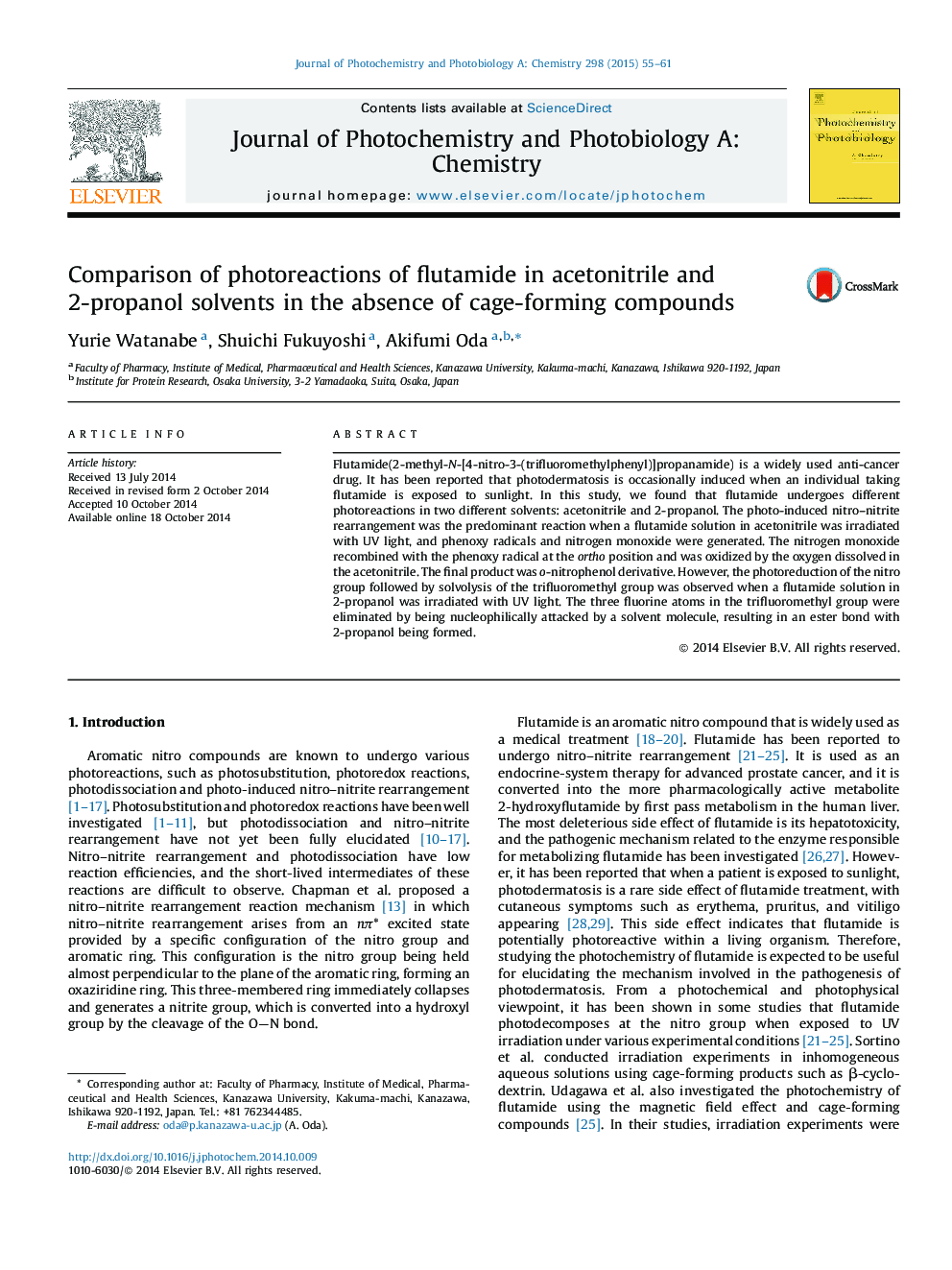| کد مقاله | کد نشریه | سال انتشار | مقاله انگلیسی | نسخه تمام متن |
|---|---|---|---|---|
| 25873 | 43900 | 2015 | 7 صفحه PDF | دانلود رایگان |
• The photoreactions of flutamide in two different solvents were investigated.
• The nitro–nitrite rearrangement was predominant photoreaction in acetonitrile.
• The photoreduction of the nitro group occurred in 2-propanol.
• The solvolysis of the trifluoromethyl group was also observed in 2-propanol.
Flutamide(2-methyl-N-[4-nitro-3-(trifluoromethylphenyl)]propanamide) is a widely used anti-cancer drug. It has been reported that photodermatosis is occasionally induced when an individual taking flutamide is exposed to sunlight. In this study, we found that flutamide undergoes different photoreactions in two different solvents: acetonitrile and 2-propanol. The photo-induced nitro–nitrite rearrangement was the predominant reaction when a flutamide solution in acetonitrile was irradiated with UV light, and phenoxy radicals and nitrogen monoxide were generated. The nitrogen monoxide recombined with the phenoxy radical at the ortho position and was oxidized by the oxygen dissolved in the acetonitrile. The final product was o-nitrophenol derivative. However, the photoreduction of the nitro group followed by solvolysis of the trifluoromethyl group was observed when a flutamide solution in 2-propanol was irradiated with UV light. The three fluorine atoms in the trifluoromethyl group were eliminated by being nucleophilically attacked by a solvent molecule, resulting in an ester bond with 2-propanol being formed.
Figure optionsDownload as PowerPoint slide
Journal: Journal of Photochemistry and Photobiology A: Chemistry - Volume 298, 1 February 2015, Pages 55–61
